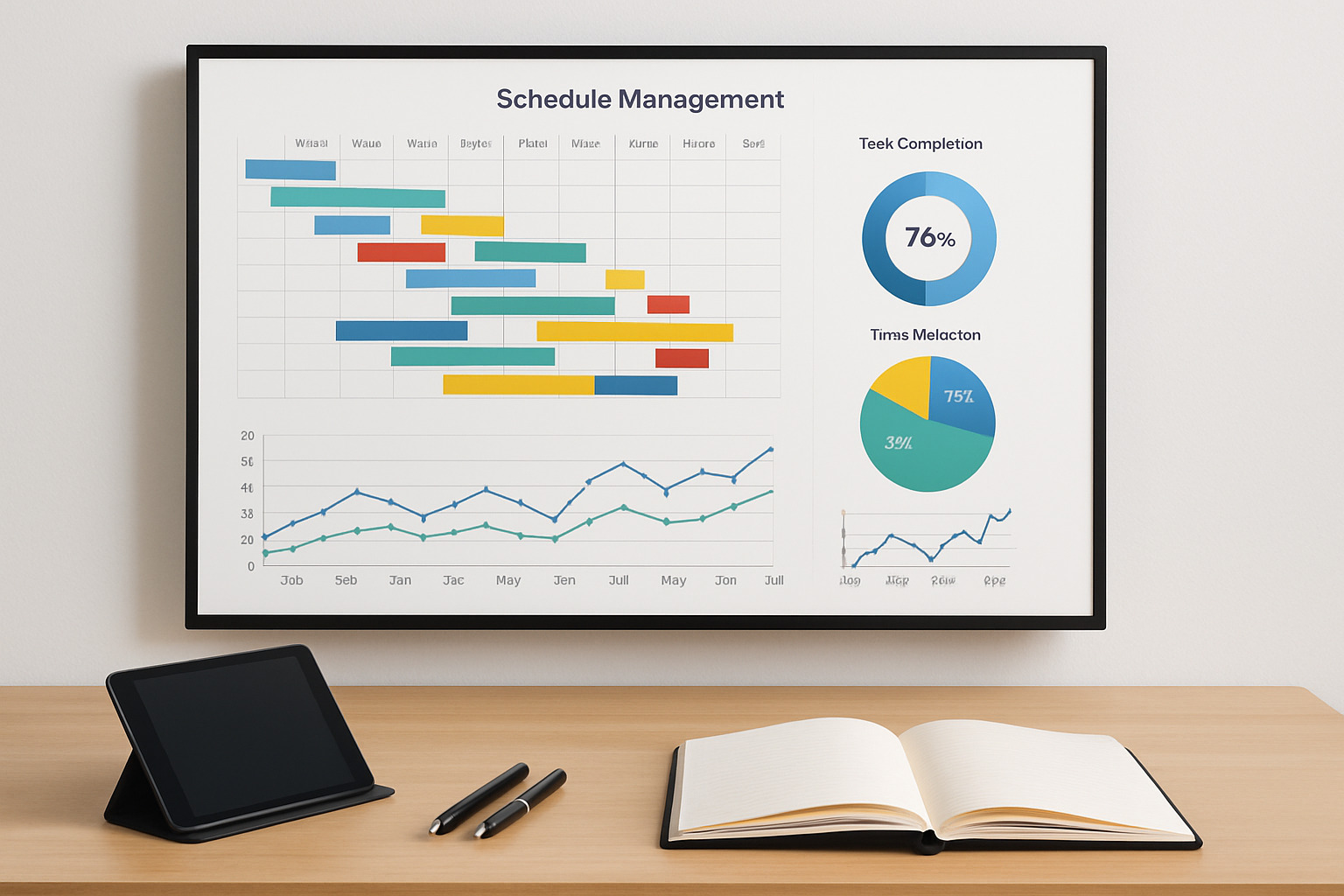How to Streamline Meeting Coordination for Remote Teams in 2025
Coordinate remote meetings with clear templates and automated reminders for faster confirmations, fair time zone rotation, and fewer reschedules.
Remote teams lose an average of 8 hours per week to scheduling coordination—time that could be spent on actual work instead of endless email chains about when everyone can meet. The problem compounds when you're juggling multiple time zones, calendar platforms, and stakeholders who respond at different speeds.
This guide covers the systematic approach to eliminating scheduling friction, from measuring coordination efficiency to choosing the right combination of tools and processes that scale with your team's needs.
Why Remote Meeting Coordination Breaks Down

Remote teams face a perfect storm of scheduling challenges that in-person teams never encounter. Without casual hallway conversations to resolve conflicts, every meeting requires deliberate coordination through digital channels—and that's where things get messy.
The breakdown typically starts with email ping-pong: "Does Tuesday work?" "Actually, Wednesday is better." "Let me check with Sarah." "Wednesday is out, how about Thursday?" Meanwhile, time zones add another layer of complexity, turning simple scheduling into mathematical puzzles that eat up your day.
Here's what we see happening in most remote teams:
The real kicker? All this coordination chaos happens before you even get to the actual meeting. You're burning energy on logistics when you could be preparing for meaningful conversations.
Core Metrics That Define a Streamlined Schedule

Think of scheduling efficiency like any other business process—you can measure it, track it, and improve it. The key is knowing which numbers actually matter.
Most teams focus on the wrong metrics. They count total meetings or track calendar utilization, but miss the friction points that really drain productivity. Instead, focus on these four indicators that reveal how smoothly your coordination actually works.
1. Booking Time to First Confirmed Slot
This measures how long it takes from "we need to meet" to "it's on the calendar." Efficient teams lock in meetings within 24-48 hours, while broken processes stretch this to weeks.
Several factors impact this timeline: number of participants, calendar visibility, and whether attendees can actually make decisions. When booking time exceeds three days, you're usually dealing with too many people or unclear decision-making authority.
2. Reschedule Frequency
High reschedule rates signal rushed initial coordination. Well-coordinated meetings rarely need to move once they're confirmed—people show up because they were genuinely available and committed from the start.
Track this monthly. If you're rescheduling more than 15% of meetings, your initial coordination process needs attention. Often, this happens when people say "yes" to meetings without checking their actual availability or energy levels.
3. Participant Response Lag
How quickly do people respond to meeting invitations? Responses within 4-6 hours during business hours indicate healthy communication flows. Longer delays usually mean people are overwhelmed or the meeting purpose isn't clear.
This metric reveals communication health beyond just scheduling. Teams with fast response times tend to have better overall collaboration patterns.
4. Meeting Attendance Rate
This percentage reflects coordination quality more than meeting value. Well-scheduled meetings see 90%+ attendance because participants were genuinely available and understood why they needed to be there.
Low attendance correlates with poor upfront coordination—meetings scheduled without proper stakeholder buy-in or clear agendas that help people prioritize their time.
What Is an Effective Meeting Cadence for Distributed Teams

Meeting cadence is your team's heartbeat—the regular rhythm of touchpoints that keeps everyone aligned. Unlike in-person teams that rely on spontaneous interactions, remote teams need predictable connection points to maintain momentum.
The right cadence depends on your team's work style and project timelines. Daily standups work for active project teams of 3-8 people in similar time zones. Weekly meetings suit most functional groups, while biweekly check-ins serve cross-functional projects with longer delivery cycles.
Here's what works for different team situations:
|
|---------------|--------------|---------------|---------------------|
| Daily | Active sprints | 3-8 people | 15-30 minutes |
| Weekly | Functional teams | 5-12 people | 30-60 minutes |
| Biweekly | Cross-functional projects | 8-15 people | 45-90 minutes |
| Monthly | Strategic planning | 10+ people | 60-120 minutes |
The key is consistency over perfection. Teams perform better with regular, predictable schedules rather than perfectly optimized but constantly changing meeting patterns. However, cadence without purpose creates meeting fatigue, so each recurring session needs clear objectives.
Five Steps to Build a Friction Free Remote Scheduling Workflow

Creating systematic scheduling processes eliminates the chaos of one-off coordination attempts. These steps work regardless of your current tools or team size—think of them as the foundation that everything else builds on.
1. Map Stakeholder Availability Windows
Start by documenting when key team members are actually available and responsive. This goes beyond published work hours to include energy patterns, existing meeting loads, and communication preferences.
Create a simple availability matrix showing core hours across time zones. This prevents scheduling meetings during someone's evening hours or when critical participants are in back-to-back sessions all day.
2. Standardize Meeting Request Templates
Different meeting types need different information upfront. Project kickoffs require participant lists and background materials, while weekly check-ins need agenda items and previous action items.
Templates reduce the mental overhead of crafting requests while ensuring you gather necessary details before coordination begins. Include fields for meeting purpose, expected outcomes, preparation requirements, and realistic duration estimates.
3. Automate Slot Selection and Holds
Modern scheduling tools can identify available meeting slots across multiple calendars and temporarily reserve time while you finalize details. This prevents the common scenario where perfect slots disappear during coordination.
Look for systems that integrate with your existing calendar applications and can handle complex scheduling scenarios like rotating time zones or buffer time between meetings.
4. Set Up Auto Follow Ups and Reminders
Configure gentle reminder sequences for non-responses and meeting confirmations. Send follow-ups 48 hours after initial requests, then escalate to direct outreach if needed.
Automated reminders 24 hours before meetings significantly reduce no-show rates. People appreciate the nudge, especially when juggling multiple projects and competing priorities.
5. Review Weekly Analytics and Iterate
Establish regular review cycles to spot bottlenecks in your coordination process. Look for patterns in reschedules, response times, and attendance rates across different meeting types and participants.
This continuous improvement mindset turns scheduling from a recurring headache into a competitive advantage. Small process tweaks compound over time into significant productivity gains.
Time Zone Management Without the Headaches

Coordinating across multiple time zones represents the biggest challenge for distributed teams. The solution isn't finding perfect times—it's establishing fair systems that work consistently.
1. Use Working Hours Guardrails
Set and communicate firm boundaries around personal time. Document your available hours in shared calendars and team directories so others can reference them during scheduling.
These boundaries protect work-life balance while setting clear expectations. When everyone knows your limits, they can plan around them instead of accidentally scheduling conflicts.
2. Rotate Meeting Times for Fairness
Ensure no team members always get inconvenient meeting slots. Monthly rotation schedules work well for most teams, though weekly rotation may be necessary for daily standups.
Fair rotation prevents resentment and ensures all team members can participate fully. Document the rotation schedule so everyone knows when their "difficult" time slots are coming.
3. Offer Async Alternatives
Not every coordination requires live meetings. Use recorded video updates for status reports, shared documents for decision-making, and threaded discussions for brainstorming.
Async alternatives reduce scheduling pressure while often producing better outcomes than rushed live meetings. People can contribute when they're most thoughtful and energized.
4. Display Multi Zone Overlays
Use calendar applications that visualize global team availability in a single view. This eliminates the mental math of converting times across multiple zones.
Visual timezone displays help identify optimal meeting windows at a glance. Look for tools that show overlap periods and highlight when team members are offline.
Choosing Tools Automations and Assistants That Scale in 2025

The right combination of scheduling tools eliminates most coordination friction. Understanding each category helps you build a system that grows with your team's needs.
1. Calendar Integration Platforms
These tools connect different calendar systems to provide unified availability views. They're essential when team members use various calendar applications or when coordinating with external partners.
Look for platforms that support two-way sync and handle calendar conflicts gracefully. The best integrations work invisibly—people can keep using their preferred calendar while gaining team-wide visibility.
2. AI Scheduling Assistants
Automated systems handle coordination through natural email conversations. They manage complex multi-party scheduling while maintaining professional communication standards.
The most effective AI assistants learn your preferences over time and escalate complex scenarios to human oversight when needed. They work within your existing email workflow, so there's no new platform to learn.
3. Human Executive Assistant Services
Professional assistants provide nuanced judgment that automation can't match. They excel at complex coordination involving multiple stakeholders, conflicting priorities, and relationship management.
Hybrid services combining AI efficiency with human oversight offer the best of both worlds—fast response times with intelligent decision-making for complex situations.
4. Collaboration Hubs
Integrated platforms combine scheduling with project management, file sharing, and communication. They work well when scheduling challenges are part of broader collaboration issues.
Consider these platforms when you want unified workflows rather than point solutions. However, they often require team-wide adoption to deliver full value.
5. Security and Compliance Layers
Enterprise teams need calendar access controls, audit trails, and data protection features. Privacy considerations become especially important when external assistants access internal calendar information.
Ensure any scheduling solution meets your organization's security requirements before implementation. Look for features like role-based permissions and data encryption.
Best Practices to Keep Virtual Meetings Short and Impactful

Improving meeting quality reduces overall scheduling burden. When every meeting delivers clear value, people respond faster to scheduling requests and attend more consistently.
1. Set Outcome Based Agendas
Structure meetings around specific deliverables rather than vague discussion topics. Clear outcomes help participants prepare effectively and keep conversations focused.
Share agendas 24-48 hours in advance with any required pre-reading materials. This preparation allows meetings to focus on decisions and next steps rather than information transfer.
2. Limit Attendees to Decision Makers
Reduce coordination complexity by inviting only essential participants. Information sharing can happen through meeting notes and recordings rather than requiring everyone's live attendance.
The "two pizza rule" applies here—if you need more than two pizzas to feed the attendees, the meeting is probably too large to be effective.
3. Employ Async Pre Reads
Share context and background information before meetings to maximize discussion time. Pre-reads work especially well for status updates, project reviews, and strategic planning sessions.
This approach transforms meetings from information dumps into decision-making sessions. People arrive prepared to contribute meaningfully rather than just listen.
4. Finish With Clear Next Steps
End every meeting with defined actions, owners, and deadlines. Circulate action items within 24 hours while decisions are fresh in everyone's memory.
This clarity reduces the need for follow-up meetings and prevents coordination drift. People know exactly what they committed to and when it's due.
The Future of AI Powered Coordination and Human Oversight

Scheduling technology is evolving toward intelligent systems that handle routine coordination while preserving human judgment for complex scenarios. AI assistants are becoming sophisticated enough to understand context, preferences, and relationship dynamics.
The future isn't about replacing human assistants—it's about amplifying their capabilities. The most effective solutions combine AI efficiency for routine tasks with human expertise for nuanced situations requiring judgment and creative problem-solving.
This hybrid approach delivers the responsiveness modern teams need while maintaining the professionalism and flexibility that complex business relationships require. As these systems learn your patterns, they become increasingly sophisticated professional partners.
Reclaim Your Calendar With Workmate Today

Workmate represents this evolution in scheduling support—combining AI efficiency with human expertise to handle meeting coordination seamlessly. Simply CC your Workmate assistant on scheduling emails, and they manage the entire process while maintaining your professional standards.
The service integrates directly into your existing email workflow. No new platforms to learn, no booking links to share—just natural email coordination that works the way you already communicate.
Your assistant understands your preferences, works across time zones, and escalates complex situations to human oversight when needed. With 24/7 coverage and transparent pricing at $200 per month, Workmate makes executive-level scheduling support accessible to every professional who values their time.
Ready to eliminate scheduling friction from your remote team coordination? Start your free trial today and experience the difference professional scheduling support makes for distributed teams.
You Deserve an Executive Assistant



